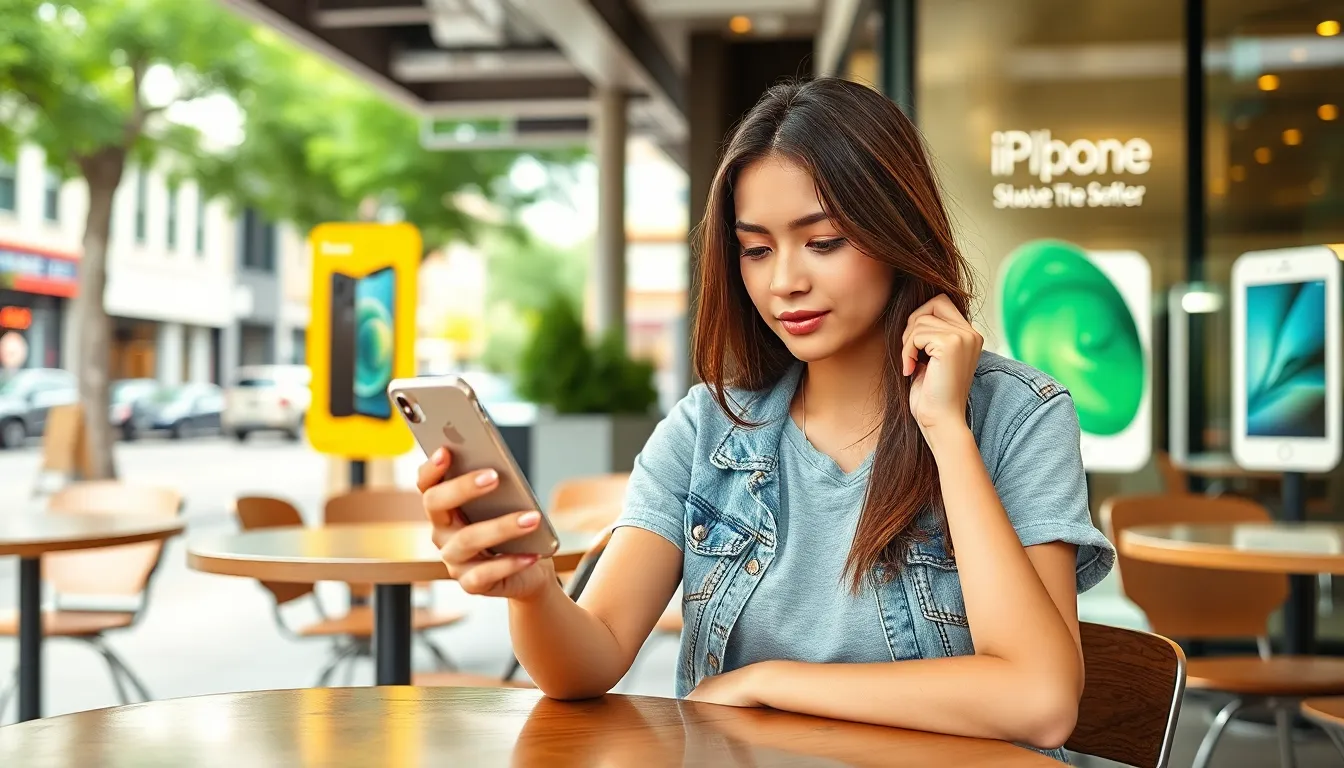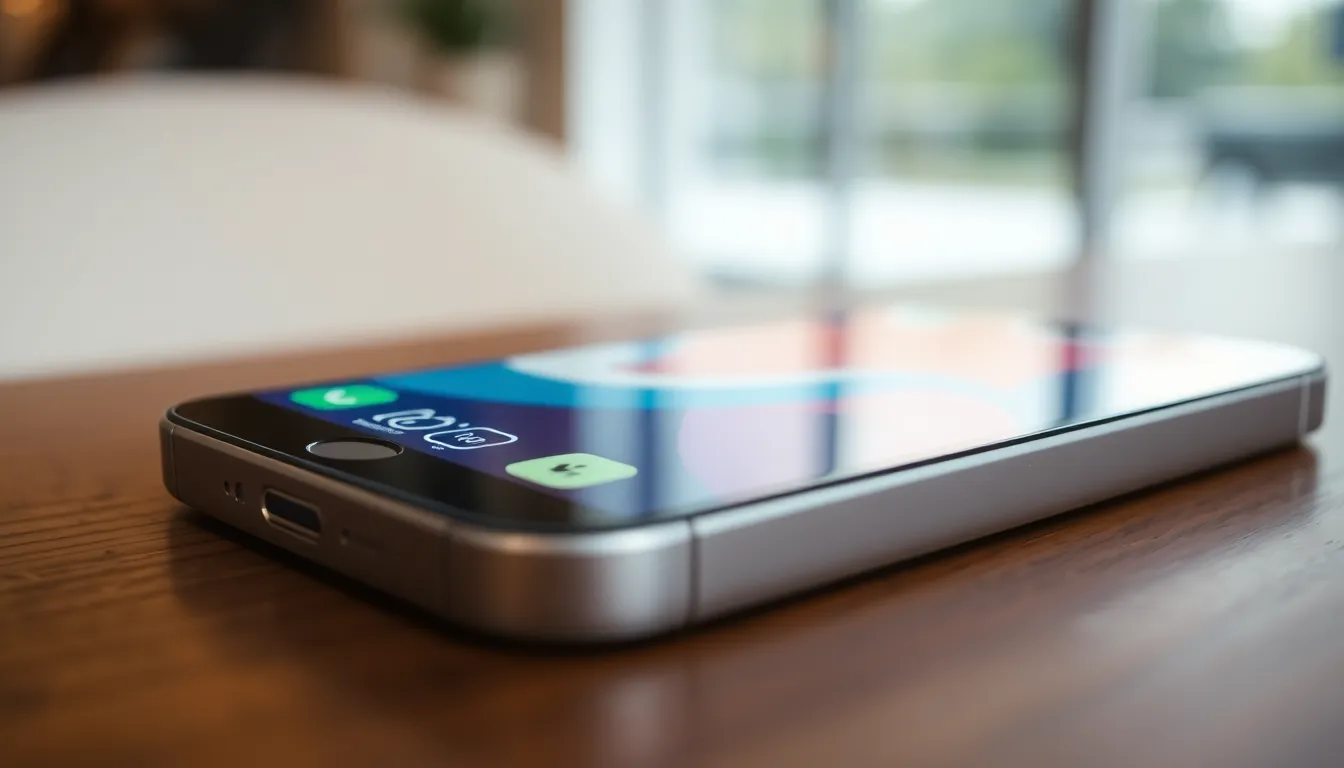In a world where smartphones seem to evolve faster than a toddler on a sugar rush, the iPhone SE is raising eyebrows. Is it still a viable option or has it officially joined the ranks of flip phones and beepers? As tech enthusiasts debate its relevance, many are left wondering if this compact powerhouse has become a relic of the past.
Table of Contents
ToggleOverview of iPhone SE
The iPhone SE stands as an important model reflecting Apple’s approach to blending performance and affordability. Its legacy continues to evoke discussions about its relevance in the current smartphone market.
History and Evolution
Launched in March 2016, the first iPhone SE marked a significant return to the smaller form factor that characterized earlier models. It combined the design elements of the iPhone 5s with improved specifications, including the A9 processor, which offered enhanced performance. In 2020, Apple introduced the second-generation iPhone SE, featuring the A13 Bionic chip and a design similar to the iPhone 8. The evolution showcases Apple’s strategy to cater to budget-conscious consumers while maintaining strong performance metrics across generations.
Key Features
The iPhone SE is characterized by its unique blend of features. Display-wise, it offers a 4.7-inch Retina HD screen, providing vibrant visuals for users. It includes a single 12-megapixel rear camera capable of high-quality images and 4K video recording. Performance is a key highlight, with the A13 Bionic chip ensuring fast processing and efficiency. Battery life can last up to 13 hours of internet use. Lastly, the compact size makes it easy to hold and operate with one hand, appealing to those seeking portability without sacrificing capability.
Current Market Landscape

The smartphone market continually shifts, impacting the relevance of devices like the iPhone SE. Understanding the current landscape can clarify the device’s standing among users.
Comparison with Latest Models
Released in 2020, the second-generation iPhone SE lags behind the latest models like the iPhone 14 and 15. Newer models offer advancements such as larger displays, improved camera systems, and enhanced battery life. Apple’s latest offerings feature the A16 Bionic chip, delivering superior performance compared to the A13 chip in the iPhone SE. Consumers may prioritize features like 5G connectivity, which the iPhone SE lacks. Despite these enhancements, the iPhone SE maintains its appeal due to its lower price point, providing budget-conscious users with a reliable device.
Consumer Preferences
Consumer preferences greatly influence the iPhone SE’s relevance in today’s market. Many users now prioritize camera quality and screen size, which newer models excel at, leaving the iPhone SE at a disadvantage. Additionally, the trend toward larger smartphones has changed user expectations regarding ergonomics and functionality. Compact devices still attract a segment of the market, especially those who value portability. Many individuals seek affordable options, demonstrating a continued interest in the iPhone SE despite its limitations. Its blend of performance and price still resonates with consumers who aren’t ready to invest in high-end models.
Performance Analysis
The iPhone SE remains a contender in performance, especially for users focused on budget-friendly options.
Hardware Specifications
The iPhone SE features the A13 Bionic chip, which enhances processing speed and efficiency. Performance-wise, this chip rivals those in many newer devices, handling multitasking and demanding applications seamlessly. Its 4.7-inch Retina HD display delivers vibrant colors and sharp visuals, making it suitable for daily tasks and media consumption. Additionally, the device boasts a 12-megapixel rear camera, capturing high-quality images even in varied lighting conditions. While newer models showcase advanced hardware innovations, the iPhone SE’s specifications still support a solid user experience for essential smartphone functions.
Software Updates
Software support remains crucial for device longevity. Apple typically provides iOS updates for several years, ensuring security and access to new features. The iPhone SE, introduced in 2020, currently supports the latest iOS versions, benefitting from performance optimizations and enhancements. Users can enjoy applications that require updated software, maintaining compatibility with increasingly sophisticated apps. Since Apple’s dedication to continuous software support contributes to device relevance, the iPhone SE still retains a competitive edge in features and security updates.
User Experience
User experience on the iPhone SE remains strong, appealing to a specific market segment that values performance and affordability. Users appreciate the compact size, making it easy to carry while still enjoying essential smartphone functionalities.
Battery Life
Battery life on the iPhone SE shines when compared to its size. With a nominal capacity of 1,821 mAh, the device can last through a full day of average use, including browsing, streaming, and social media. Users can expect up to 13 hours of video playback, allowing for extended entertainment without frequent recharging. While newer iPhone models feature larger batteries, this can lead to diminishing returns in terms of daily use for some consumers. Those who prioritize portability and low-cost devices find that the iPhone SE balances battery longevity with its size and performance.
Camera Quality
Camera quality on the iPhone SE meets the demands of most users. The 12-megapixel rear camera captures vibrant photos, thanks to advanced image processing powered by the A13 Bionic chip. Users benefit from features like Smart HDR and Portrait mode, enhancing overall photo quality. Low-light performance proves satisfactory, allowing for clear images in various lighting conditions. Although newer models boast multi-camera systems, the single-camera design still delivers excellent results for everyday photography. Many users appreciate that the iPhone SE caters to their basic photography needs without the complexities associated with higher-end models.
Future Outlook
The iPhone SE faces several potential upgrades and shifts in market relevance as time progresses.
Potential Upgrades
Apple could enhance the iPhone SE by incorporating 5G capabilities, which would improve connectivity speeds significantly. Updates to the camera system might also attract users looking for better photo quality, possibly introducing advanced features from newer models. Battery life improvements could address concerns for intensive users, allowing for longer usage without needing to recharge. Additionally, integrating newer hardware components like the A15 or A16 Bionic chip might boost overall performance while maintaining affordability. These upgrades would keep the iPhone SE competitive in a rapidly evolving smartphone environment.
Market Relevance
Current market preferences show a trend toward larger screens and multi-camera systems, posing challenges for the iPhone SE’s continued appeal. Despite these shifts, demand for compact devices persists, with some users favoring the iPhone SE’s size and price. The device’s affordability remains a strong selling point, drawing budget-conscious consumers who seek reliable performance without premium costs. Tech enthusiasts continue to debate its place in the lineup, illustrating that it still captures interest amid newer models that offer advanced features. As long as Apple maintains software support, the iPhone SE retains relevance, catering to a specific user base favoring simplicity and cost-effectiveness.
The iPhone SE continues to carve out its niche in a market dominated by larger and more advanced models. Its combination of performance and affordability resonates with users who prioritize essential smartphone functions without the hefty price tag. While it may not boast the latest features found in newer models, the device remains relevant for those who appreciate its compact size and solid performance.
As long as Apple supports the iPhone SE with software updates, it will likely maintain its appeal among budget-conscious consumers. The ongoing demand for smaller smartphones suggests that the iPhone SE isn’t quite obsolete yet, but rather a viable option for a specific segment of the market.




